As a small business owner, you need customers to purchase your products and/or services. But you don’t need any type of customer, you want to have customers with the right purchase intent.
Your current but also your potential customers are the greatest asset you have as an entrepreneur.
In this article, I want to talk about some concepts you can use to find and target the right customers with the right purchase intent for your company. The goal is to create a customer database with the highest possible likelihood of sales.
Purchase Intent and the Concept of Intent Marketing
Let’s start first with the concept of purchase intent and intent marketing as something that will define what you need to do to capitalize on your efforts related to this concept.
What is purchase intent?
In simple words, purchase intent will tell you how close your targeted customers are to purchasing your products or services. Imagine that you have a scale of 0 to 100 in percentages, and 0% will mean that the specific potential customer is not someone that will buy something from you soon. If the purchase intent is 100%, you are 100% sure this customer will purchase something from you soon.

You get the idea of what is the meaning of the purchase intent. Isn’t this great? Isn’t it great to have a system that will tell you how far or close someone is to buying something from you?
Yes, it is excellent, but still, it is not something very tangible when it comes to how to find the right purchase intent.
There are many things about how companies measure purchase intent. Some of them use surveys, where they ask current or potential customers several questions, and based on their answers, they can use the right number as purchase intent. Some will also combine this data with the sales data they already have, and thanks to RFM analysis, that will give three important things related to your customers:
- Recency or how recently a customer has purchased something from you,
- Frequency or how often they buy from you, and
- Monetary value or how much the customer spends in your company.
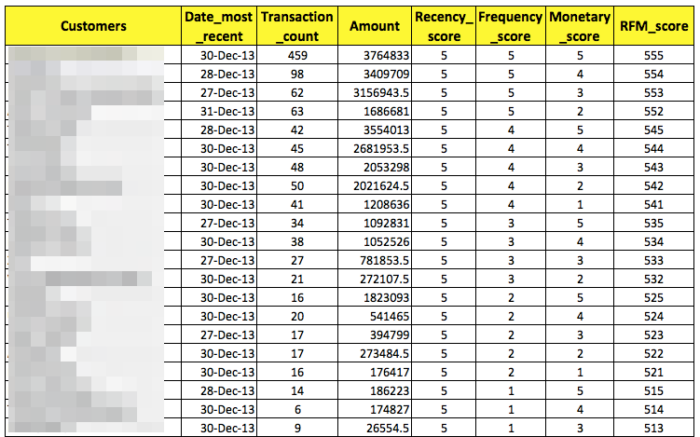
Today all types of companies from all industries can use different tools to collect, analyze, and predict customer behavior in the future. If you succeed in integrating other third-party data in the calculations of purchase intent for your customers, it will guarantee that you will succeed.
You need to understand that purchase intent takes many factors into account, such as customer behavior, demographic data, content consumption, what they want, what they don’t want, etc. The goal is to have the ability to target them with different content to move them through your sales funnel toward buying your product.
What is Purchase Intent Scoring?
So, as you can see, we need a scoring system for purchase intent, and we have already talked about it as a percentage for the chance that someone will buy something from you. I have started with the percentages of the chances, but it is a probability when we talk in the math language.
The purchase intent scoring presented in terms of probability as how much is probable that the specific customer will buy from you will be measured in the range from 0 to 1. If we say that the purchase intent scoring for this customer is 0 or close to zero, it means that such a customer will probably not buy anything from you soon. If this is 1, it means that the customer will surely buy something from you soon.
So, as you can see, purchase intent scoring is the process of collecting data regarding current or potential customers’ activities and mining this data into something that we call purchase intent score.
It would be best if you had in mind that what you are doing here is required to ensure you learn how to feed prospects through your sales funnel and what you need to do regarding marketing and sales content to convince them to buy. This score can help you get intelligence for your customers.
We will talk in more detail about the data and what you can do in the next sections here. Now, let’s continue with another important concept, and it is intent marketing.
Related: 30 Places to Find Prospects & Leads for Your Business
Intent Marketing
Intent marketing is a concept that will define the process of what your company will need to do to understand the purchase intent of the customers and ensure that you will deliver relevant content and information to them. The goal is to connect your product or service with your potential or current customer.
For example, this will be the process that will tell you what you will need to do for:
- Purchase intent of less than 0.3
- The intent from 0.3 to 0.69
- Purchase intent of more than 0.7.
You will probably have different classifications. It will be based on the results you will have here, or how many customers are part of each segment related to purchasing intent — purchase intent segments.
So, purchase intent segments will help you to implement targeted campaigns toward current and potential customers who have an actual interest in your specific product or service right now. Yes, right now, and not in the future. When you use intent marketing, you will know exactly what you need to do to get the highest performance of your campaign with the lowest possible costs.
For example, let’s say you are selling some type of widget. So, you will market your widget on the purchase intent segment with more than 0.7. When it comes to the second segment (from 0.3 to 0.69), you will probably have to give more information to convince your potential customers that your solution will solve their problems. And for the last segment, your campaign will be more oriented through information and education that will create a higher demand for your products and services.
Related: 8 Ideas to Help You to Create Your Own Sales Leads Databases
Collect the right data to analyze the right purchase intent.
1. Look at Your Sales Data!
The easiest way to get some starting point with the data is to start with your current customers. These are data that you already have, and you can use them to segment your current customers in different purchase intent segments.
Why do you need to start with your sales data?
Simply because you already have this data and you want to learn about some customer’s behavior related to purchases such as:
- When did the specific customer last time buy something from you?
- How many times in the specific period of time he is buying something from you?
- How much money does he spend with your company?
- What product categories is he buying?
These data you already have inside your sales records because you capture customers’ activity on each sales point.
So, you need to analyze your data to identify different patterns related to the above questions and make predictions about future customer behavior based on these data.
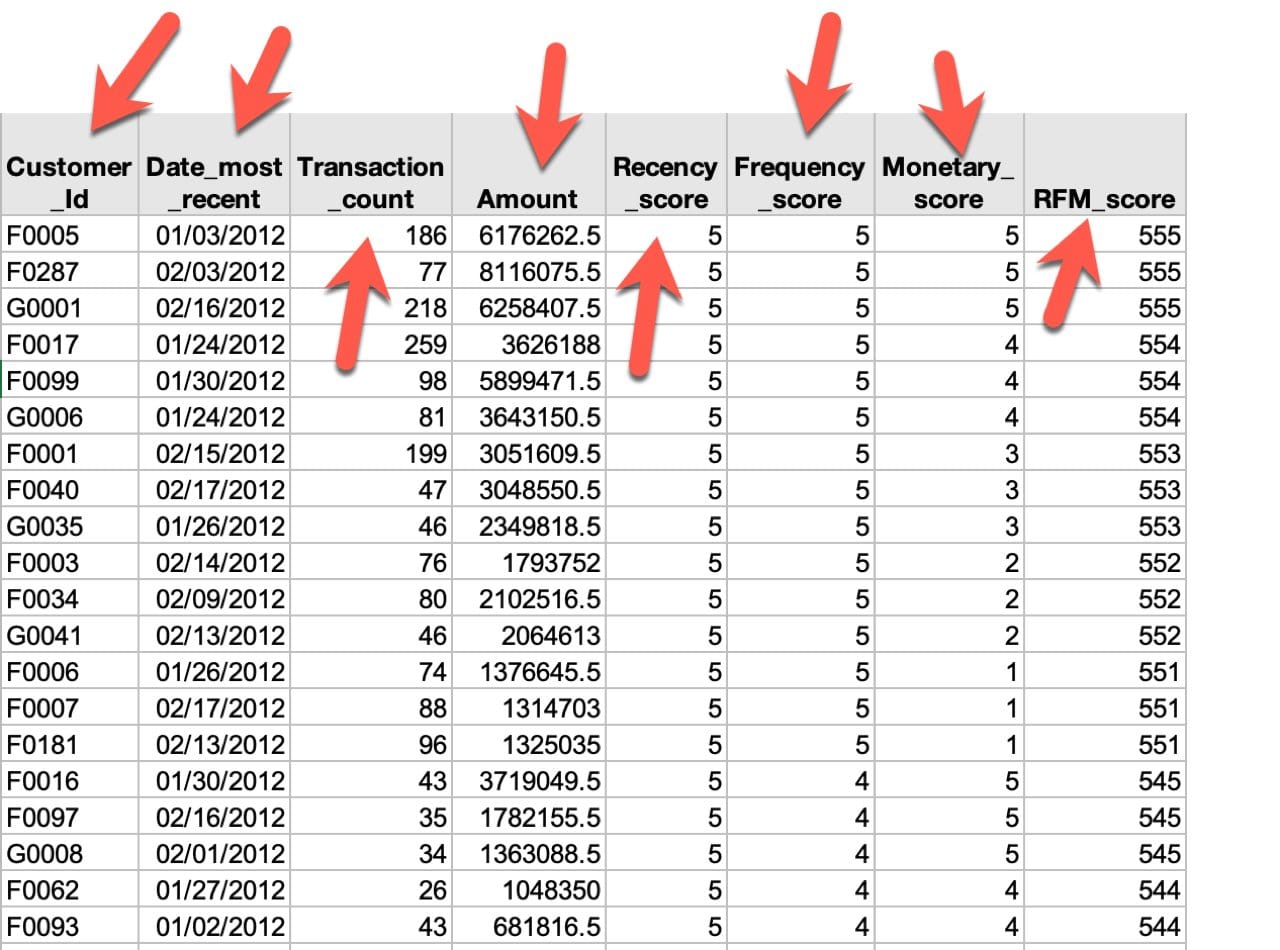
The image above is part of the RFM analysis conducted on real sales data. As you can see, thanks to the last purchase date, transaction count, and amount of money spent in the company, we can calculate RFM scores. First, individuals for recency, frequency, and money spend, and second the whole RFM score. Now, you can see who of your customers are the most important customers for you.
Also, you can make a graphical presentation of these results to see how monetary value is distributed per the other two RF categories.
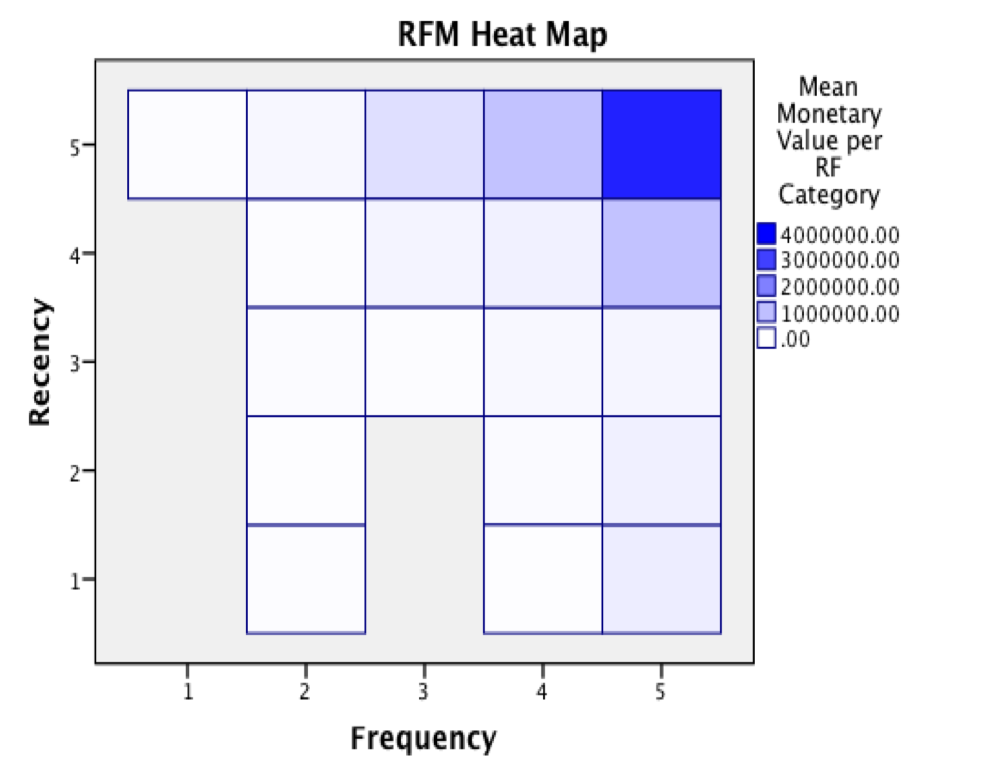
The next thing you can do is divide your customers according to product categories that your company sells to them.
To do this, you will need to classify your customers according to their importance. For example, these can be the customers who buy the most profitable products from you. You can use ABC analysis to classify them, for example, in three groups:
- A — most important customers who bring 80% of income for your business;
- B — important medium customers who bring 15% of income for your company, and
- C — not vital customers who bring less than 5% of income for your company.
In the image below, we have classified customers like I, II, III, IV, and V.
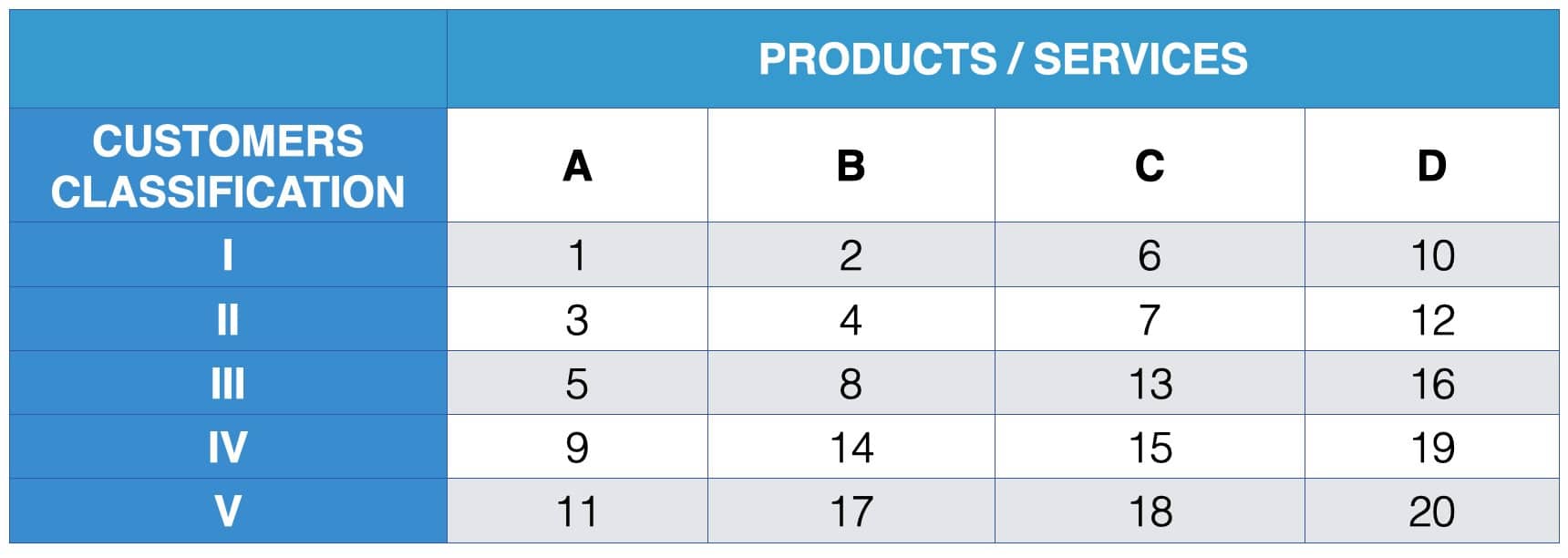
Then, we can put our product categories (A, B, C, and D) in the row where A products are the most important products for your company, while D products are not. Now, we can easily relate each customer category with each product category, giving the importance score number. For example, if we have a customer from category I who buys products from category A, this is the most important sale for your company.
Now, we can easily design different marketing strategies related to purchasing intention based on our own sales data.
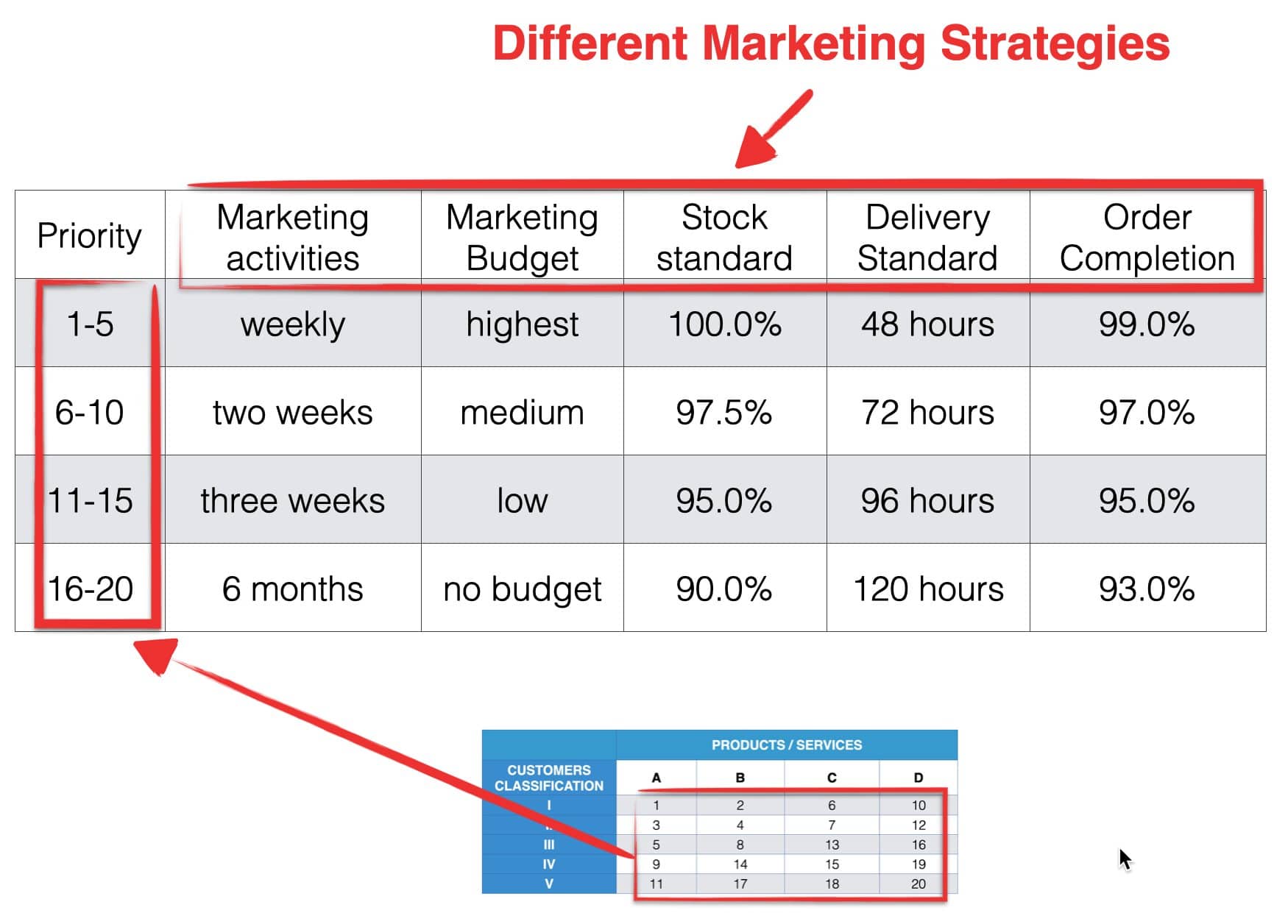
2. Look at Your CRM data?
If you already have procedures for capturing customers’ activities, it means that you already have internal purchase intent data. Probably you already collect data from your website through analytics or simply through the contact form, forum discussion, etc.
Also, you can track purchase intent data if you collect emails and send informational and promotional email newsletters or series of messages to encourage purchases from potential customers. One of the best services for this purpose is ConvertKit. You can make visual automation of the whole process and you can easily track what happens when you send some information or promotion.
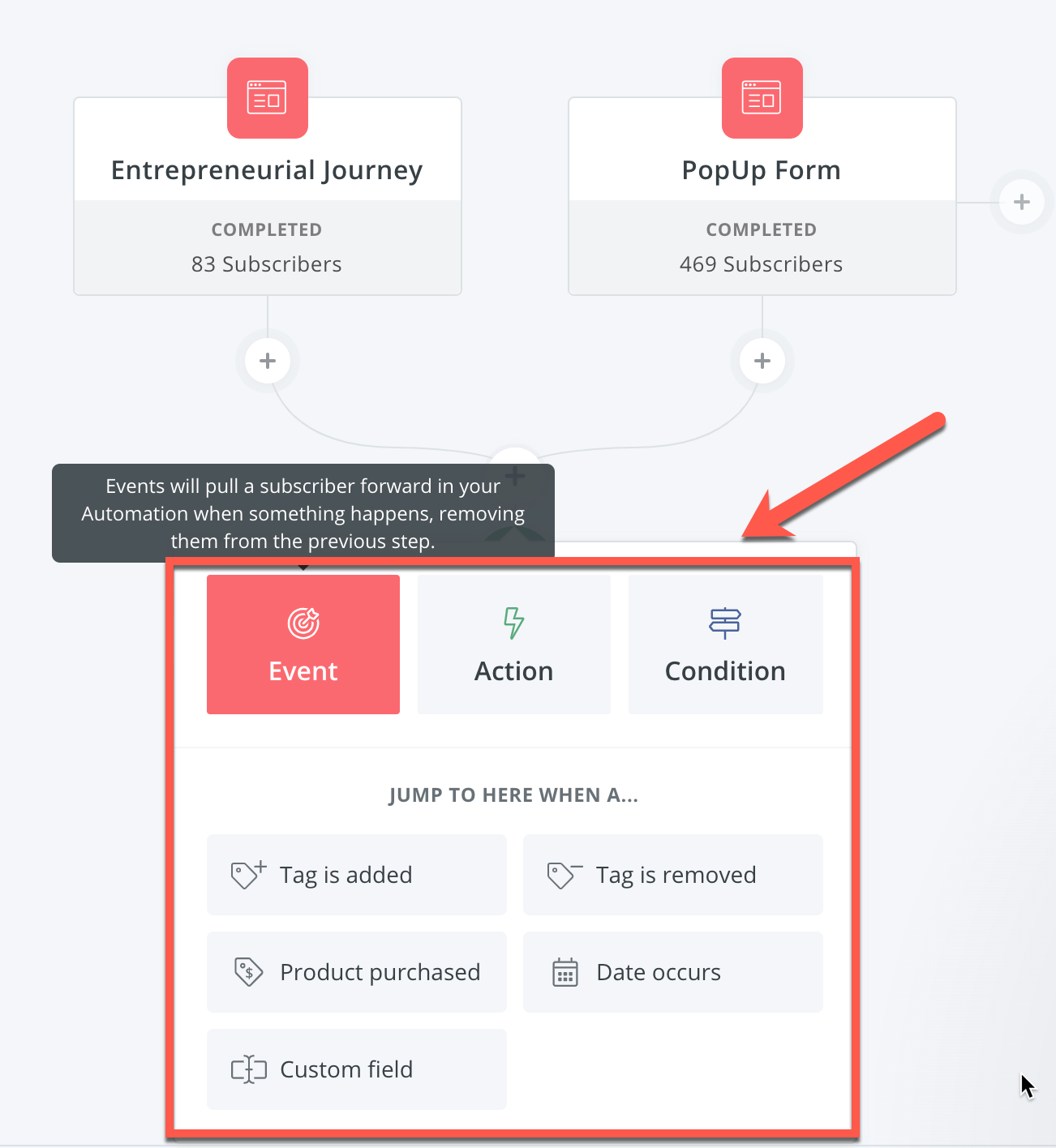
You can learn more about using automation on ConvertKit’s Automation features page.
The most important thing that you need to do as a part of this step is to answer two important questions:
- How do you currently generate customers? This is an important question in this step. So, as a first thing, stop for the moment and think about how you currently generate customers for your small business.
- Can you improve something inside your customer’s generation process? When you know how you generate customers, you can easily check if there are possibilities for improvements.
3. Ask your current and potential customers on your email list.
Related: Increase Your Brand Potential: How to Measure and Strategies
Also, if your company is already established company, and you already have customers, you can ask them:
- What do they want?
- How do they decide to purchase your products and services?
- Where were they when they find about your company?
- What was the purchase journey for them regarding your company?
As you can see, these are important questions that you will always want to know for each of your customers. So, it is a good idea to start designing a systematic approach for data collection from your current customers.
4. Look at other available external databases?
External data related to purchase intent, or third-party data are data that are collected from sources that are outside your company.
Social media platforms can be a good starting point to start collecting data related to the purchase intent of potential customers. When someone shares something on social media based on the language they are using, we can conclude if this person:
- Have intended to buy a product or service in the near future or
- Have you recently bought a product or service
While you collect these data, you can also come to potential new customers for your company.
Many people use social media platforms to express their beliefs, thoughts, intentions, and opinions. These words are a brand or product mentions with specific phrases that can be an indication about the purchase intent, like “just bought,” “new gadget comes to my door,” “where to buy,” etc.
For example, look inside your Twitter feed. What can you see? Probably many tweets related to different subjects. Between these tweets, you can easily find what products different persons like, what they don’t like, and what their experience is in some specific purchase process.
You can define several important keywords or phrases related to the purchase intent, like:
- Price for product or service
- Where to buy…
- Emotions that express curiosity, optimism, insecurity, boredom, happiness, etc.
These are only given as a starting point where you can start collecting data related to the possible purchase intent of potential customers. Start with the list of 10 phrases you will use for data collection.
The simplest way is to use IFTTT which will populate a simple database in Google Sheets of tweets that might interest you and that contain phrases you are analyzing. You can enter the hashtag, term, or phrase you want to search, and all new tweets that include it will be saved in a Google spreadsheet.
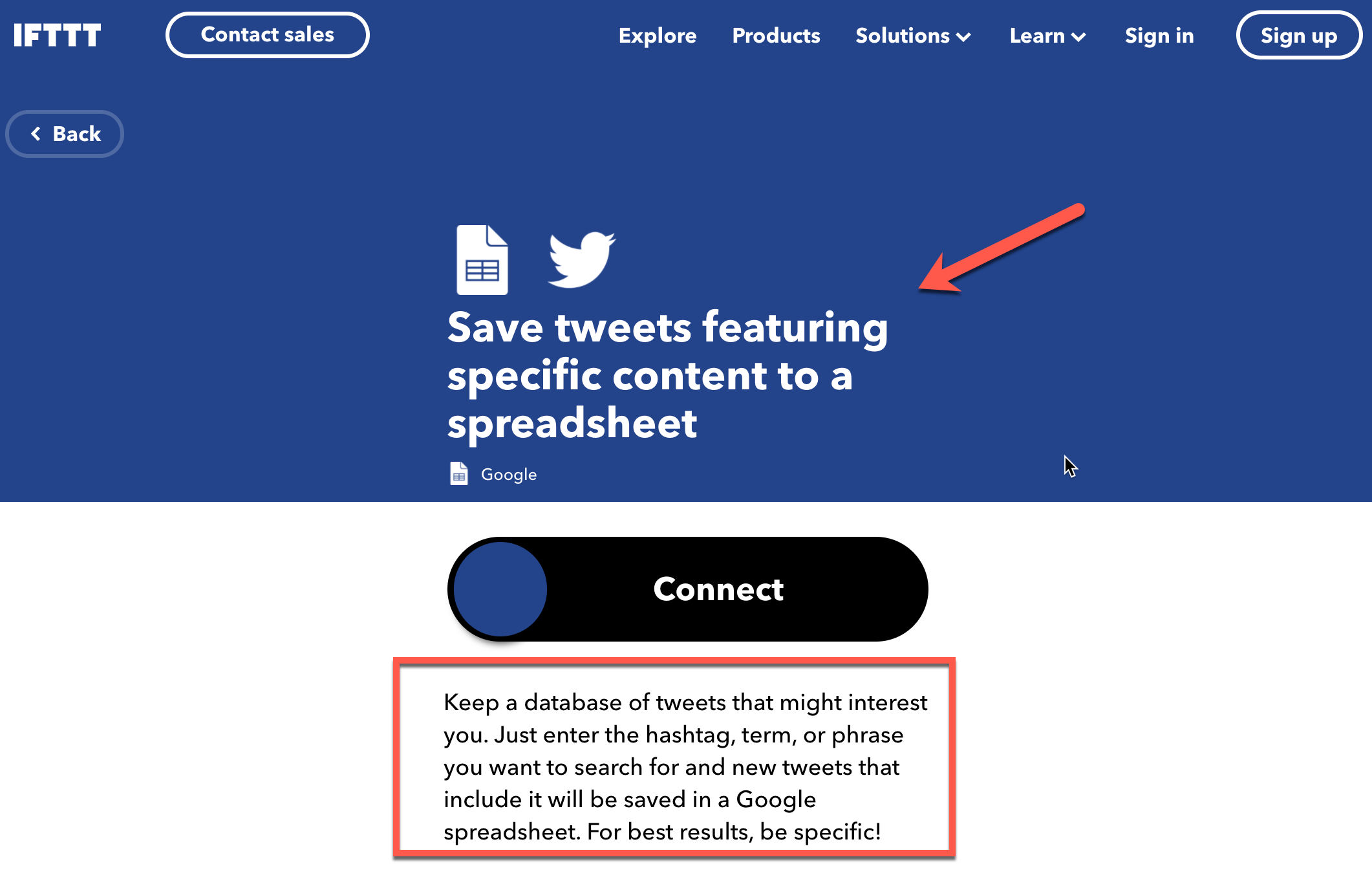
You can select to get a notification when the service is active and put your phrases as search operators. Next, you will need to do is to give a spreadsheet name and folder where it will save the results inside your Google Drive.
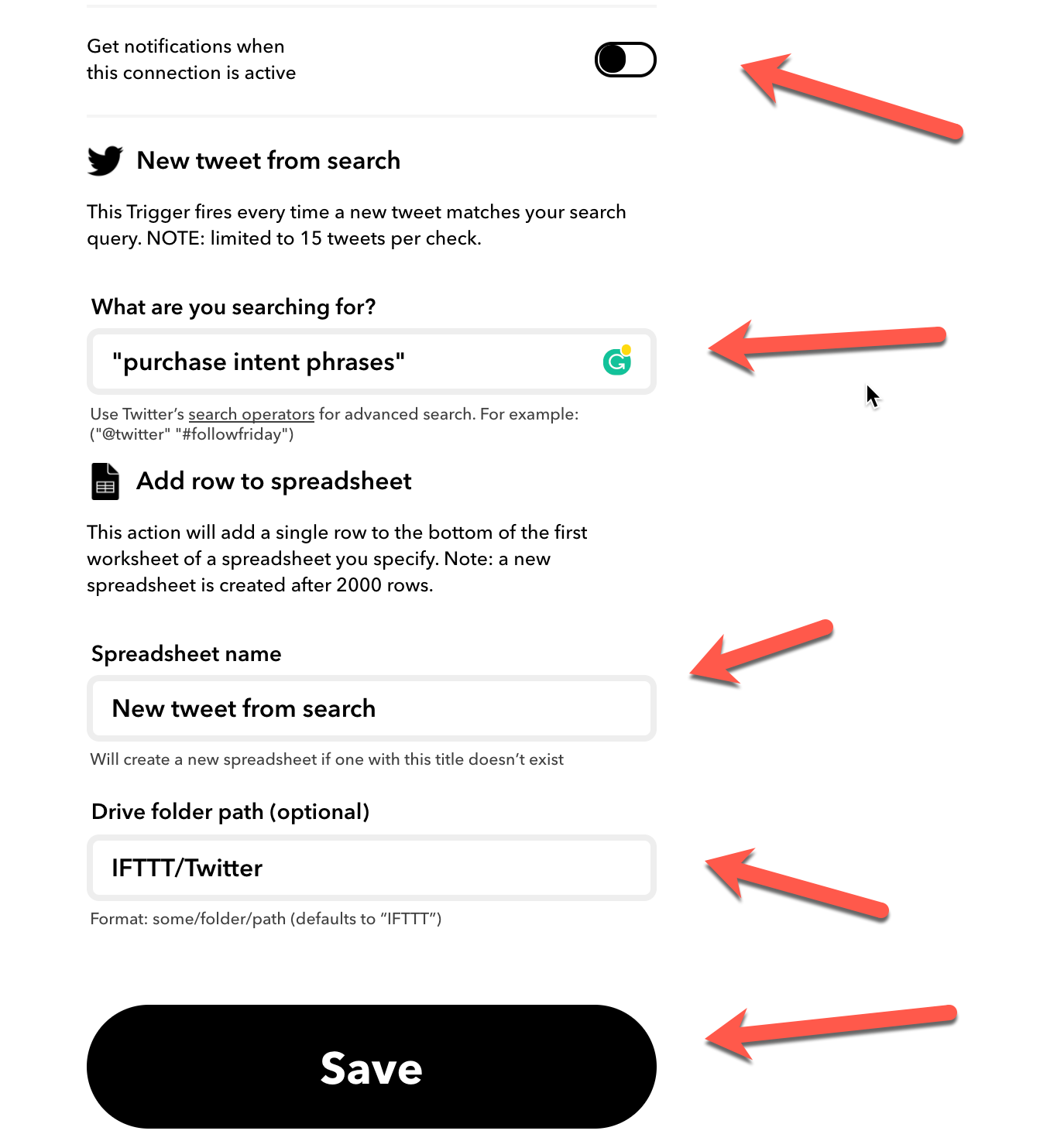
Remember that you want to forecast users’ purchase intent from the language or words they use on Twitter. Monitoring the online behavior of Twitter users, you can find many influencers within your industry and you can learn many things about the kind of content your potential customers are interested in.
For example, you can have these types of queries that you want to collect information for:
- “products and services”
- Where to buy “products and services”
- Discount for “products and services”
- Free shipping of “products and services”
- Price of “products and services”
The “products and services” can be specific product categories where your products and services come from. For example, if you sell T-shirts you can have a phrase like: “where to buy summer t-shirts”.
It is important to mention one important thing here. Not all phrases will have the same worth of purchase intent. For example, if you search for “products and services” it doesn’t mean that potential customers will want to buy such a product. In some cases that means that she will want to find information related to the specific product and services. But, if they ask “where to buy” something, it is clearer that there is strong purchase intent.
You can use the same process with Google Keyword Planner Tool and Amazon to find data and analyze the purchase intent. You can find more details inside our guide to validate business ideas.
Also, make alerts for all phrases that you have identified as some level of purchase intent. You can use Google Alerts for this purpose.

You can select how often you want this alert to check new articles related to your search, sources, languages, region, how many results to get, and where to be delivered alert (on your email or on specific RSS feed).
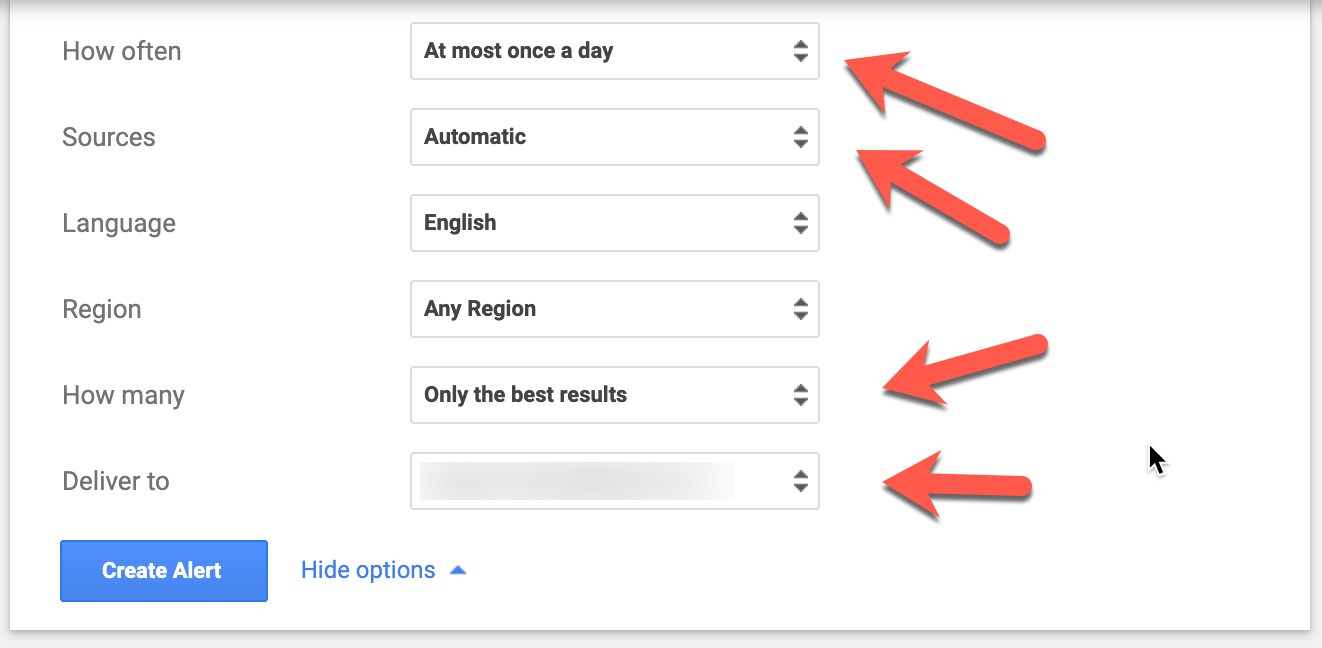
Start Designing Intent-Based Content You Can Use
Now, when you already have data, make an analysis, and draw conclusions about the purchase intent, you can start developing intent-based content for your channels.
The best way is to start with your sales funnel. Check different stages of your funnel and if there is a need for improvement or changes inside the content flow through the funnel.
One strategy that I have tested with many clients is starting with creating as many as possible blog posts for your small business blog. For example, we start building blog content related to the following subjects based on the research of purchase intent:
- Mistakes your customers are making;
- Failures that your customers are experiencing;
- How to do things your customers need to know more about to do;
- Someone else’s story;
- Actions they will need to take, etc.
What’s next?
So, now you already have a system that will enable you to analyze the dynamics of purchase intent.
Generally, you have three more steps you will need to take:
- Optimize your presence on different marketing channels. Become visible on as much as possible channels. Share useful content that will be based on purchase intent you have analyzed.
- Improve targeting processes for your advertising. Use data that you have analyzed in the first two steps to work on the continuous improvement of your targeting process. Don’t forget about behavioral retargeting that will need to be included inside your funnel.
- Make a redesign of your sales funnel. And as the last thing, when you have done with all the experiments and when you can say that the new targeting process brings better results for your company, redesign your sales funnel, so the new way of work becomes a standard.





